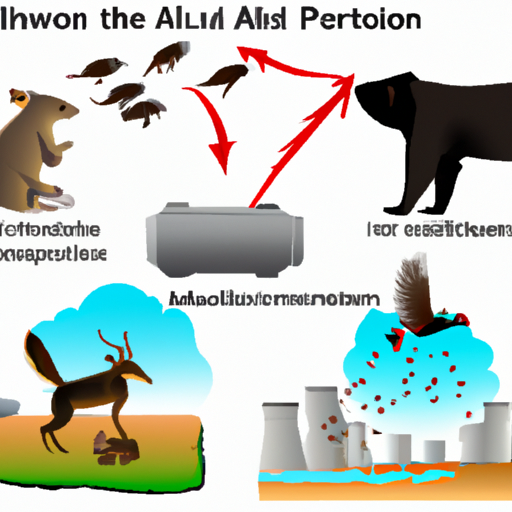 Introduction:
Introduction:
Air pollution, a global environmental issue caused mainly by human activities, has severe consequences for both humans and wildlife. While humans have developed various mitigation measures to combat the harmful effects of air pollution, animals, too, have adapted in remarkable ways to cope with this ever-increasing threat. This article aims to explore the diverse strategies employed by various animal species to survive and thrive amidst polluted air.
1. Respiratory Adaptations:
Animals have evolved intricate respiratory systems to combat air pollution. Some species possess specialized air-filtering mechanisms, such as nasal turbinate bones that help trap and filter out harmful particulate matter. Birds, for instance, have complex air sacs that enable efficient oxygen extraction and minimize exposure to pollutants.
2. Behavioral Modifications:
Animals exhibiting behavioral adaptations have altered their habits and routines to avoid or minimize exposure to polluted air. Nocturnal animals, like bats and owls, have shifted their activity patterns to avoid peak pollution hours during the day. Similarly, certain migratory species have altered their flight routes to circumvent regions with high pollution levels.
3. Physiological Changes:
Animals have also undergone physiological adaptations to counteract the detrimental effects of air pollution. For instance, some species have developed antioxidant defense systems to neutralize harmful free radicals generated by pollutants. Studies have shown that certain insects and birds possess higher levels of antioxidants in polluted areas compared to those in cleaner environments.
4. Genetic Alterations:
Over time, animals have adapted to air pollution through genetic modifications. Populations exposed to chronic pollution have exhibited changes in gene frequencies, leading to the emergence of individuals with inherent resistance or tolerance to specific pollutants. Such genetic variations have been observed in fish populations living in polluted rivers and insects residing in industrial areas.
5. Microbial Symbiosis:
Microbes play a crucial role in the adaptation of animals to air pollution. Some organisms form symbiotic relationships with specific bacteria or fungi that aid in detoxification of pollutants or enhance respiratory efficiency. For example, certain insects harbor bacteria in their bodies that metabolize toxic compounds, thereby reducing their harmful effects.
6. Habitat Selection:
Animals have shown a remarkable ability to select habitats that offer relatively cleaner air quality. Urban-dwelling species, like pigeons and rats, have exhibited preferences for specific microhabitats, such as parks or rooftops, where air pollution levels are comparatively lower. Similarly, aquatic species may seek refuge in cleaner water bodies located away from polluted areas.
7. Altered Feeding Strategies:
Food availability and quality can significantly impact an animal’s susceptibility to air pollution. Some species have modified their feeding strategies to reduce toxin intake. For example, certain birds shift their foraging preferences towards less polluted food sources or alter their diet to include more antioxidant-rich foods that help combat the harmful effects of pollutants.
Conclusion:
While air pollution remains a pressing concern for wildlife, animals have demonstrated remarkable resilience and adaptability in the face of this environmental challenge. Through respiratory adaptations, behavioral modifications, physiological changes, genetic alterations, microbial symbiosis, habitat selection, and altered feeding strategies, animals have found ways to survive and even thrive in polluted environments. Understanding and appreciating these adaptations is essential for developing effective conservation strategies to mitigate the impact of air pollution on our planet’s diverse ecosystems.
